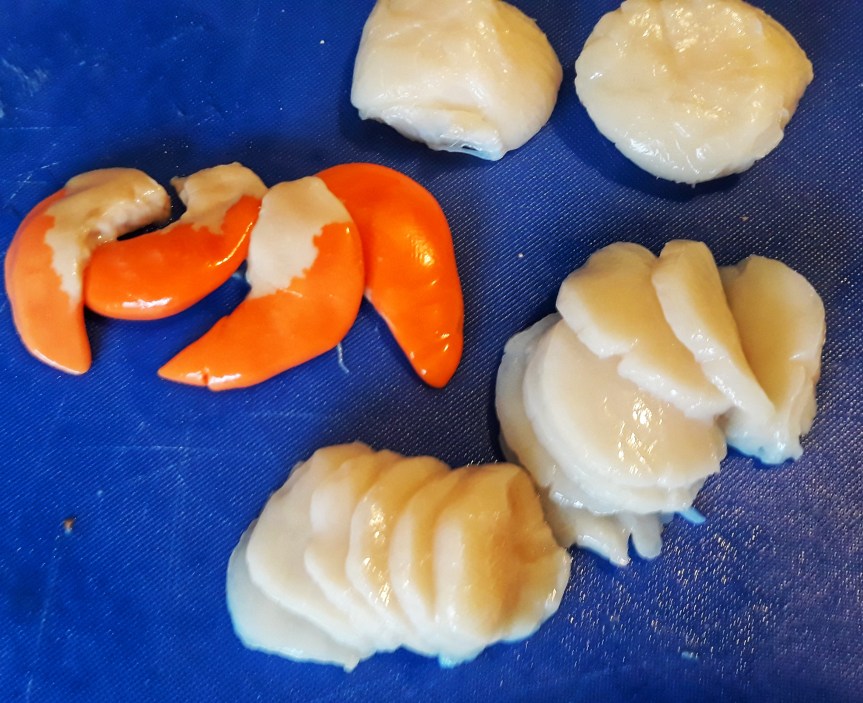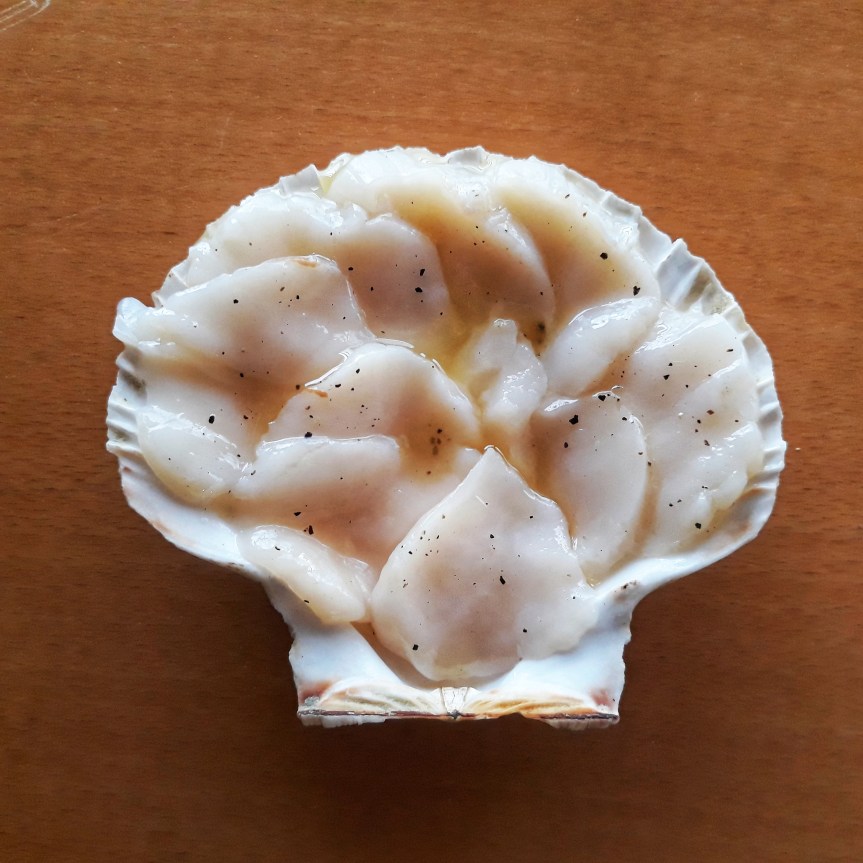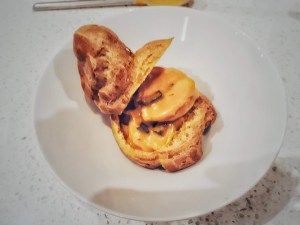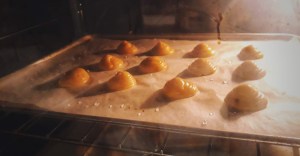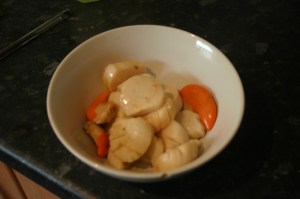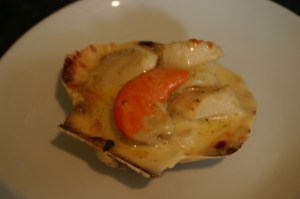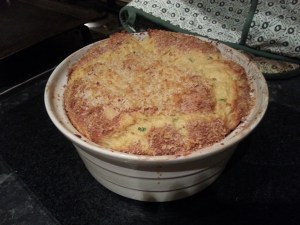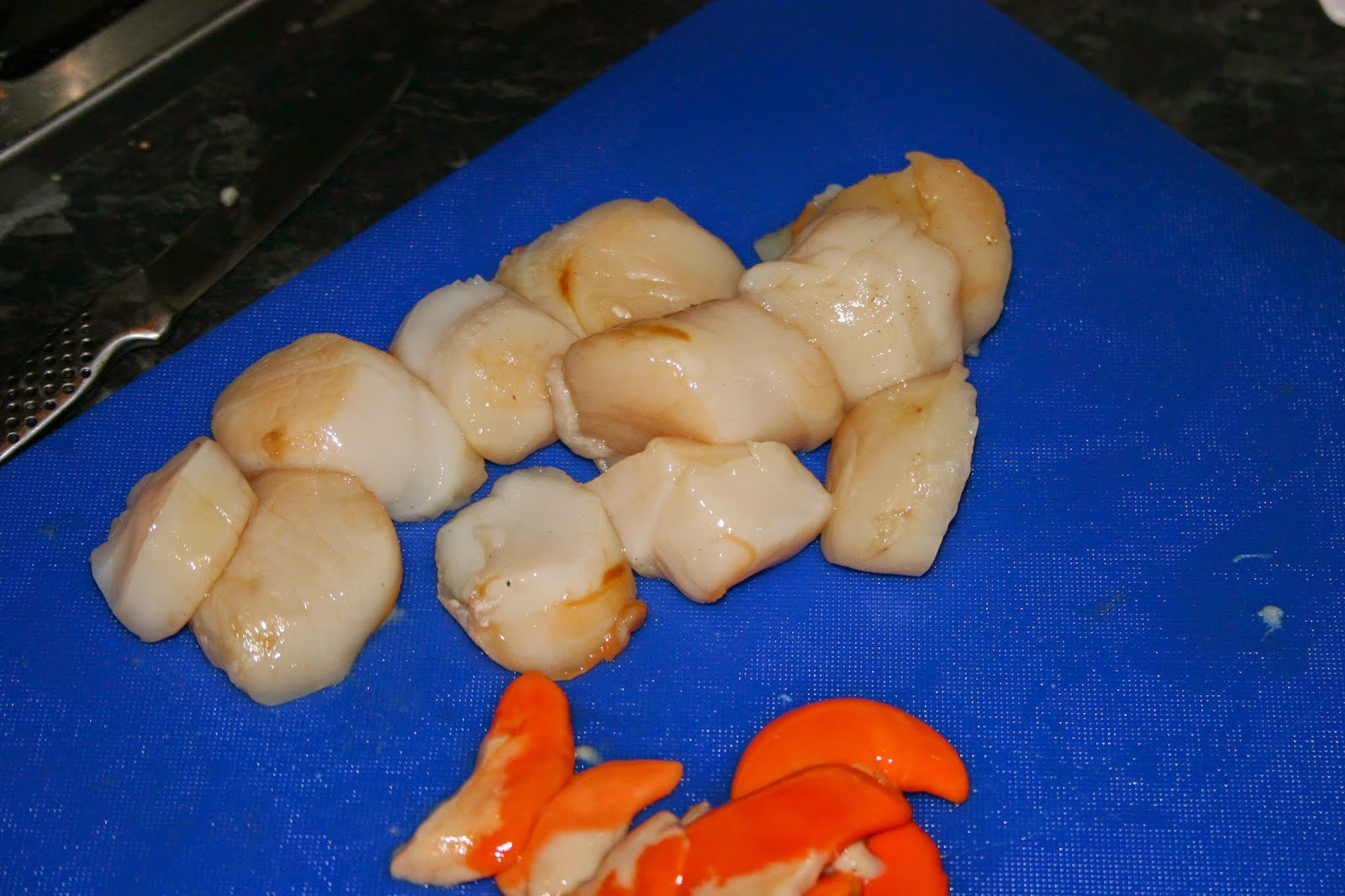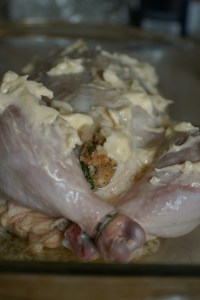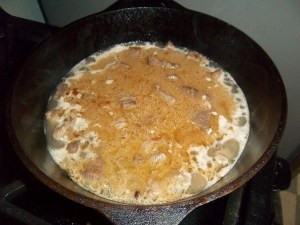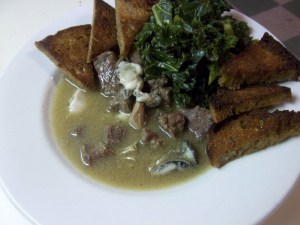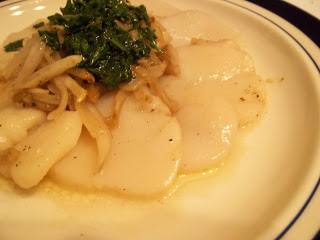I have now completed the Shellfish section of the Fish chapter of English Food. I should have completed it ages ago but I really dragged out the last two recipes: I was too lazy to make the choux pastry and hollandaise sauce required, both being kitchen nemeses of mine. As it turned out, they were both pretty straight-forward and there were no real disasters.
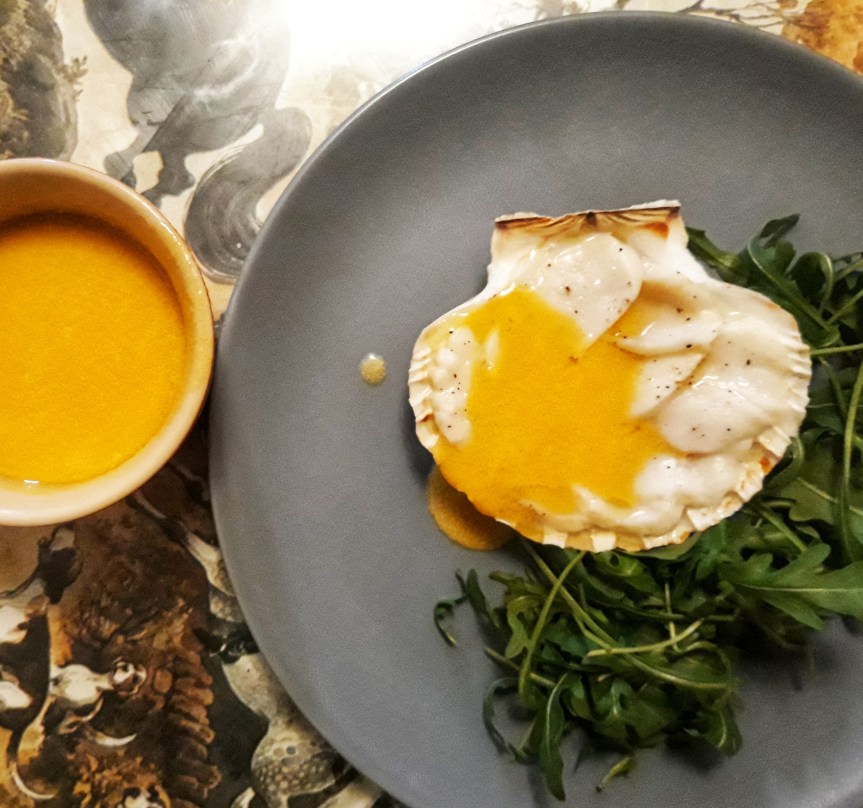
The section contained thirteen recipes and contained recipes for oysters, mussels, crabs, lobsters, prawns, brown shrimp and scallops, there was also a recipe that explained how to boil live shellfish. This may not seem very comprehensive, but there are many other recipes in the book that use shellfish, #200 Steak, Kidney & Oyster Pudding and #235 Lisanne’s Chicken with Mussels being just two examples. That said, I do notice some very English shellfish have been overlooked altogether: not a single recipe using cockles, whelks, winkles or razor shells (“spoots”). I suspect she didn’t like them.
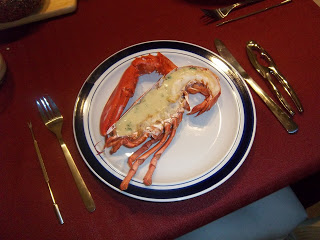
The potential issue for me was getting hold of oysters in abundance as they crop up a lot in the book. They are expensive so they really hit you in the wallet, plus they always come in the shell so they are also a potential hit to your fingers and hands when trying to shuck them. Luckily for me, I lived in the USA for a couple of years (2010-2012) where it was fairly standard to be able to buy tubs of pre-shucked oysters at a fraction of the UK price. Where you found oysters, you usually found live lobsters too, meaning I could try my hand at boiling them live – a stressful experience.
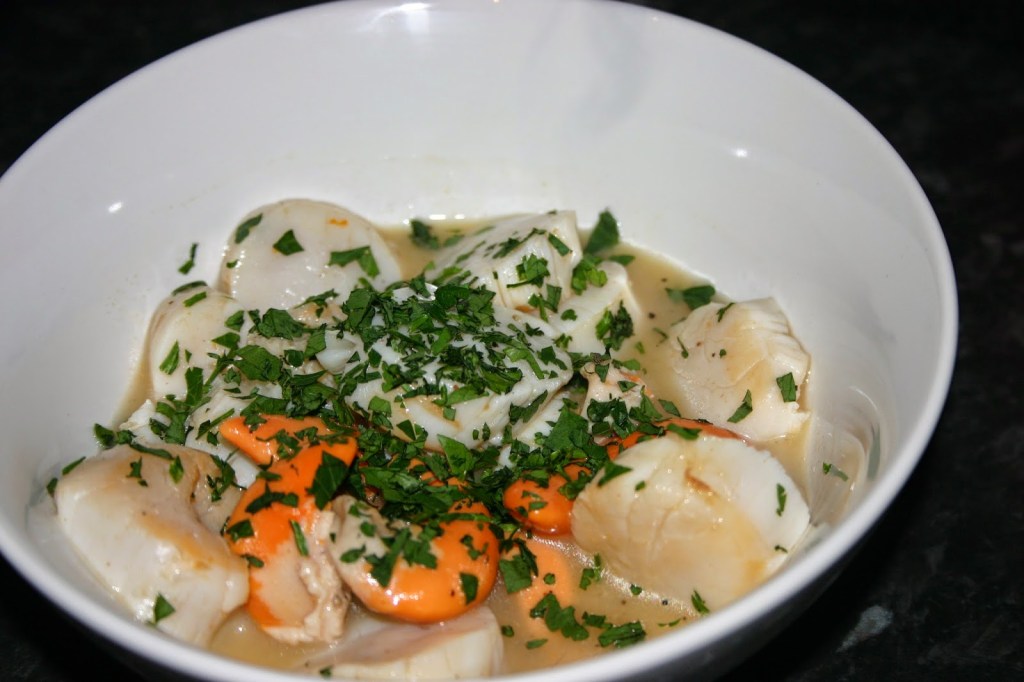
I also learned a few new skills: shucking and boiling I’ve already mentioned, but I also had to extract the brown and white meat from crabs, something that takes a little practise, but I reckon I’m pretty good at it now.
Jane loved fish and wrote a very big book of fish recipes and it seems she is a fan of almost everything fishy. She describes mussels as ‘a luxurious bargain’ and particularly liked scallops (four of the thirteen recipes are scallop based), complaining about how many of them went straight to Spain. In fact, she was depressed with the apathy we hold as a country towards shellfish in general. Remember though, that English Food came out in the 1970s, with revisions in the 1980s and 1990s, and I believe a lot had changed since then. There are some great fishmongers near to me, and whilst they may not have big tanks of live lobster, they certainly have a great selection. That said, they are unfortunately not the norm on every high street.
The chapter scored well with a mean score of 7.54/10 making it the third most popular so far. There was only one recipe that scored top marks – #378 Elizabeth David’s Potted Crab, which ended up as the fish course in my first pop-up restaurant back in the day. The sublime #281 Scallops with White Wine & Jerusalem Artichokes narrowly missed out, scoring 9.5/10.

The good average was helped by the fact that there were no bad recipes, just a couple of mediocre ones: there was the bizarre #189 Mussel & Leek Rolypoly (one I should revisit as I don’t think I had the skills or the palate to appreciate it properly at the time) and #392 Stewed Scallops with Orange Sauce, an odd dish I don’t think I interpreted very well.
As usual when I sum up a section scroll down to find links to all of the recipes in the Shellfish section of the book with their scores. As mentioned, there were thirteen recipes and the section scored a mean of 7.54/10. For those who like their data, the median and mode were 7.5/10. If you cooked one of the recipes in the past, or have cooked one in the past, please let me know in the comments section below.
#271 How to Boil Crabs, Lobsters, Prawns and Shrimps 8.5/10
#268 Potted Shrimps 7.5/10
#378 Elizabeth David’s Potted Crab 10/10
#140 Crab Tart 7/10
#192 Elizabeth David’s Prawn Paste 7.5/10
#91 Spicy Prawns 7/10
#435 Shellfish Puffs 8.5/10
#189 Mussel and Leek Rolypoly 4.5/10
#132 Oyster Loaves 7.5/10
#437 Michael Ryan’s Warm Scallop Salad 7.5/10
#392 Stewed Scallops with Orange Sauce 4.5/10
#281 Scallops with White Wine and Jerusalem Artichokes 9.5/10


